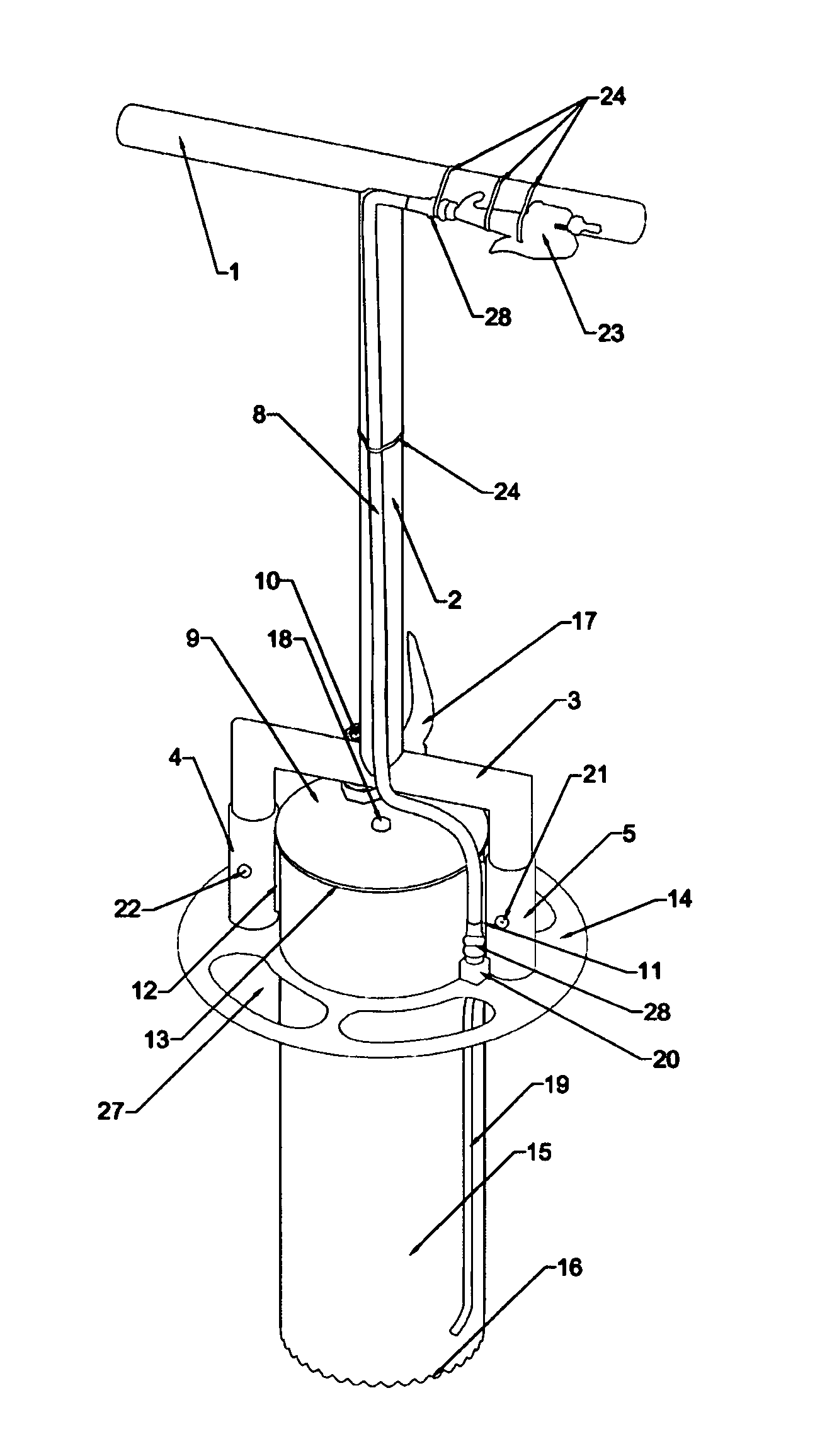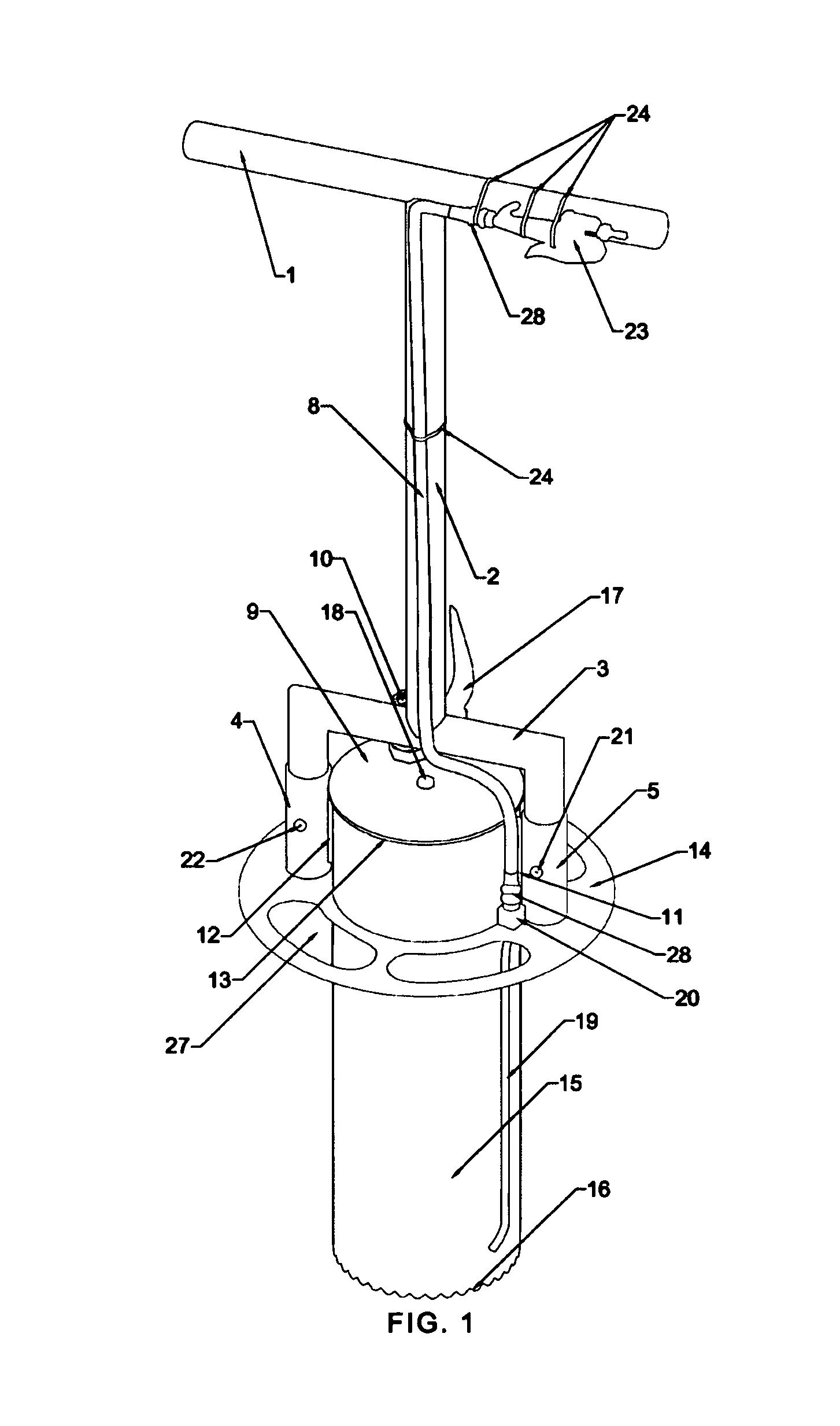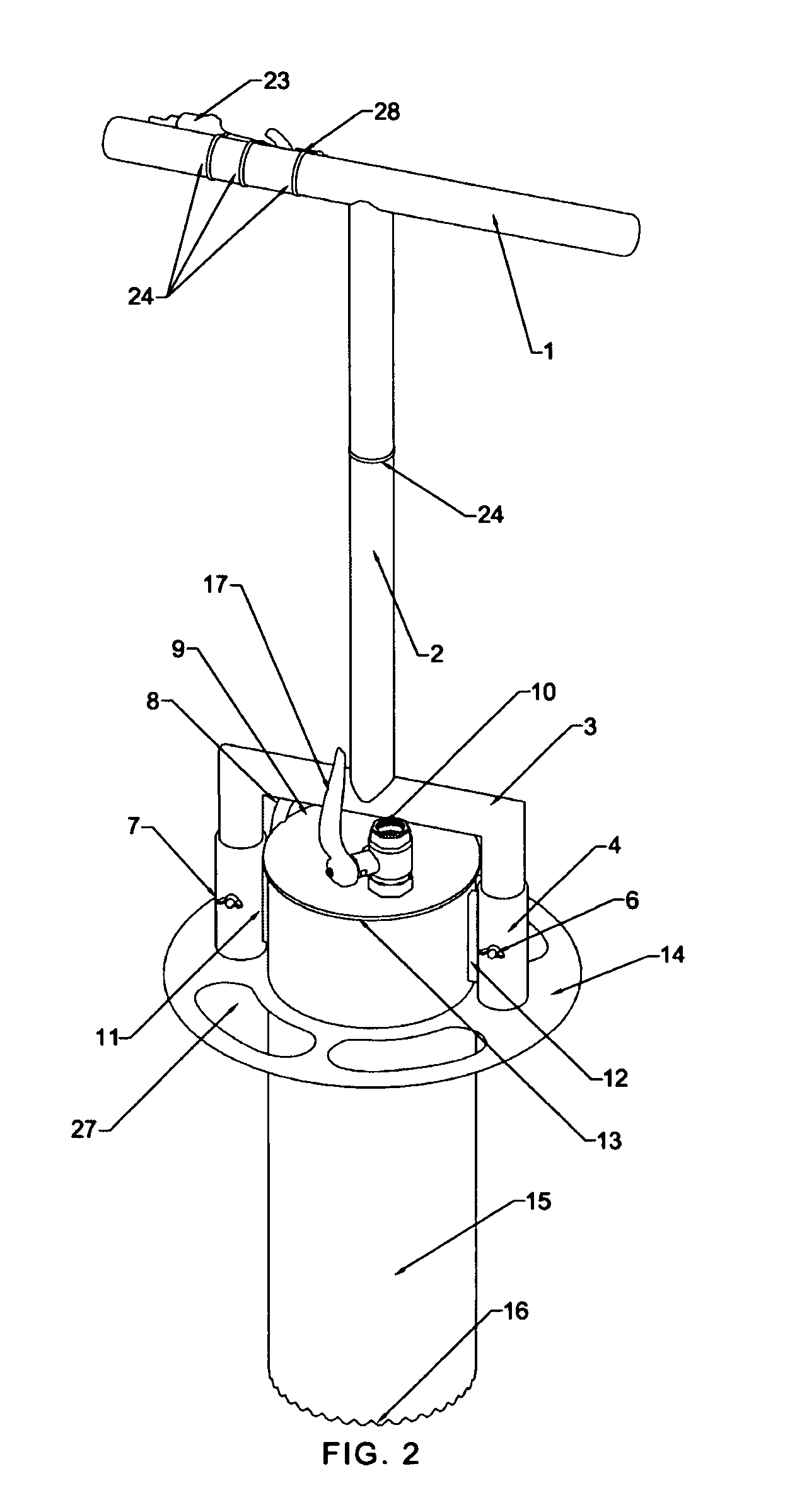Submerged Substrate Plug Cutter and Related Method
a technology of submerged substrate and plug cutter, which is applied in the field of submerged substrate plug cutter and related method, can solve the problems of ineffective and physically demanding methods, many physical and practical challenges of seagrass habitat establishment, and the difficulty of establishing seagrass habitat using these methods,
- Summary
- Abstract
- Description
- Claims
- Application Information
AI Technical Summary
Benefits of technology
Problems solved by technology
Method used
Image
Examples
Embodiment Construction
[0025]Plug Cutter
[0026]Referring now to the drawings, wherein like reference characters designate like or corresponding parts throughout the several views, there is shown in FIGS. 1 and 2 the preferred embodiment of the plug cutter. Unless otherwise noted, the components of the plug cutter are to be constructed of a durable, light-weight, and non-corrosive material such as stainless steel.
[0027]The hollow cutting member 15 is open at both ends and has sharpened serrated cutting teeth 16 along the bottom edge to allow for easier penetration of the submerged substrate. In addition, this design will allow for the clean shearing of the targeted plant (including the plant's root system or rhizomes) to assist with the preservation of the targeted plant and surrounding substrate during transportation and transplant. In the preferred embodiment, the hollow cutting member 15 is cylindrical and designed with an approximate length of 35.6 cm (14 inches) and an approximate outside diameter of 1...
PUM
 Login to View More
Login to View More Abstract
Description
Claims
Application Information
 Login to View More
Login to View More - R&D
- Intellectual Property
- Life Sciences
- Materials
- Tech Scout
- Unparalleled Data Quality
- Higher Quality Content
- 60% Fewer Hallucinations
Browse by: Latest US Patents, China's latest patents, Technical Efficacy Thesaurus, Application Domain, Technology Topic, Popular Technical Reports.
© 2025 PatSnap. All rights reserved.Legal|Privacy policy|Modern Slavery Act Transparency Statement|Sitemap|About US| Contact US: help@patsnap.com



